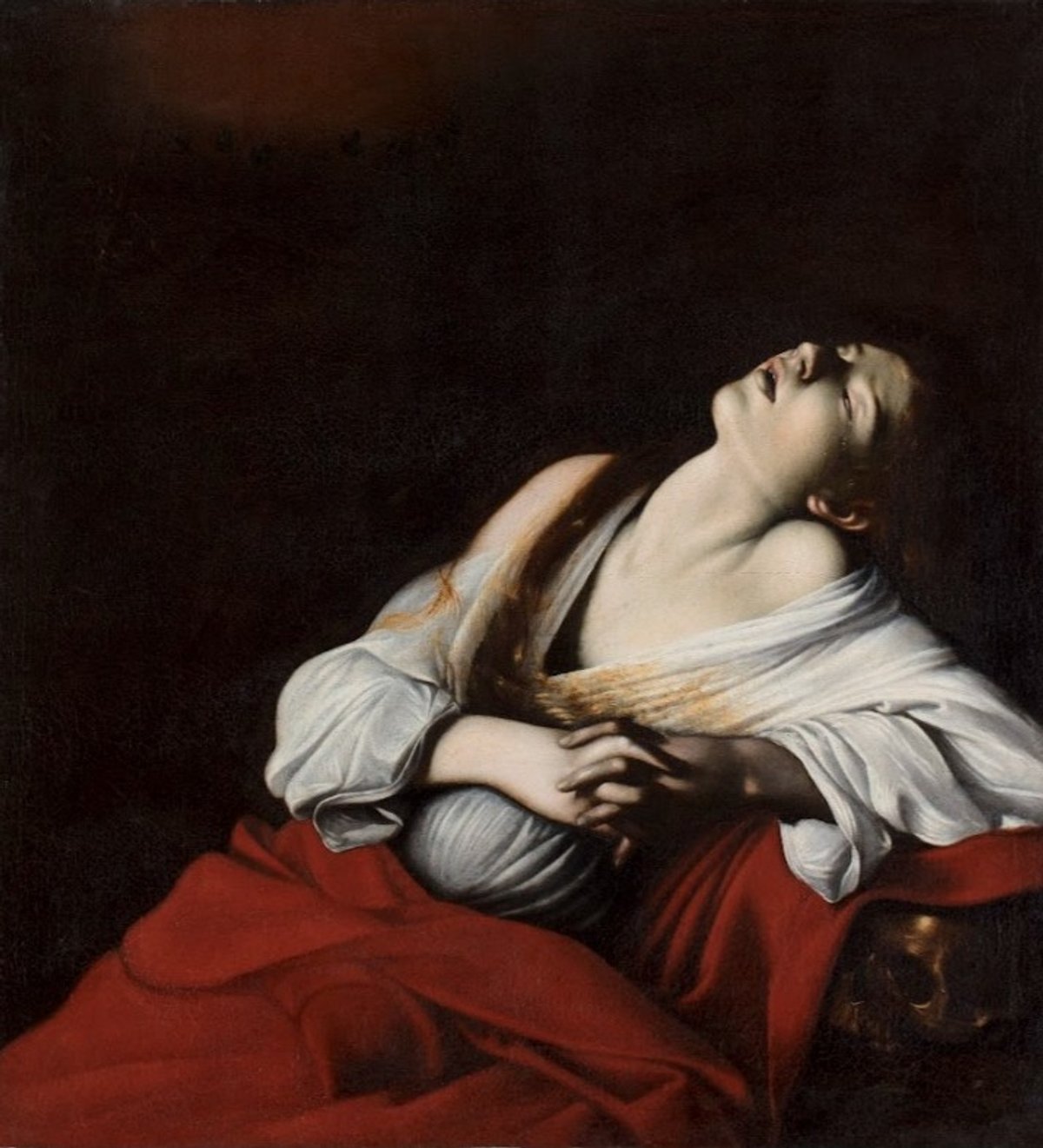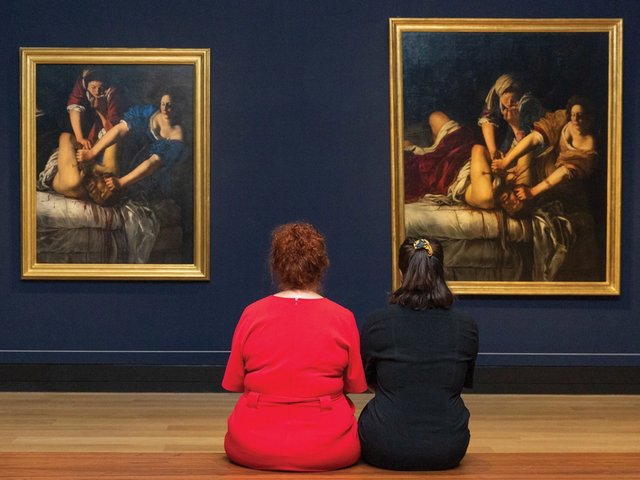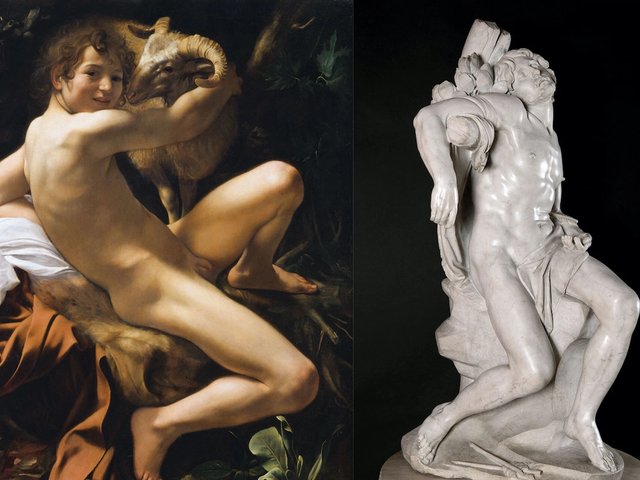A pale woman is seated against a dark background, arching backwards, her head lolling back and a single tear streaking down from her almost shut eyes. Her elbow is perched on a barely visible skull. Light and shadow dance across her white and red robes, her ears, and hands—hallmarks of the artist’s skilful chiaroscuro.
This is Mary Magdalene in Ecstasy, a painting recently attributed to Michelangelo Merisi da Caravaggio (1571 – 1610), which has been brought to India through a joint partnership between the Cultural Centre of the Italian Embassy and the Kiran Nadar Museum of Art (KNMA). According to the Italian ambassador to India, Antonio Bartoli, the painting’s display marks the first time that a work by the 16th-century artist has been shown in the country.
For centuries Mary Magdalene in Ecstasy was known only by copies made by followers of Caravaggio. However, in 2014, the Italian art historian and prominent Caravaggio scholar Mina Gregori authenticated the version now on show in Delhi. In 2018 it was displayed in Paris, alongside another version of the work known as Klein Magdalena, leading experts to once again debate the authenticity of both paintings.
Mary Magdalene in Ecstasy was unveiled on 11 April at the Italian Embassy Cultural Centre in Delhi, in the presence of several dignitaries, including the Italian deputy prime minister Antonio Tajani. It will be on display for the public at KNMA’s outlet in a mall in Delhi’s Saket area from 18 April to 18 May.
Caravaggio and Rome
Rome saw many tumultuous events during Caravaggio’s lifespan, including a famine and religious upheaval. It is perhaps why themes of violence and agony were often reflected in his work, as well as his personal life. Caravaggio’s father was a well-known architect in Milan, but died during the plague when the artist was a child.
After this, he moved to Rome, where he gained acclaim for bringing an acute sense of realism and dramatic use of light and dark to his paintings. While this earned him the reputation of a groundbreaking Baroque artist and many wealthy patrons, it did not bring him stability—he is often characterised as violent and a “madman”. It is believed that he made Mary Magdalene in Ecstasy while he was on the run after killing a man in 1606.
A much debated figure
There have been many heated disagreements as to who Mary Magdalene, the subject of Mary Magdalene in Ecstasy and companion to Jesus in the four gospels, was. Due to the ambiguity of her identity, she has become a well known figure in popular culture, and has been depicted in television shows and films such as The Da Vinci Code and, most recently, Martin Scorsese’s The Saints.
Yet, Caravaggio’s depiction of Mary Magdalene offers none of the scandal or sensationalism often associated with the religious figure. Instead, the painting captures an intensely human moment—sorrowful, spiritual, and transcendent—leaving room for viewers to draw their own conclusions.





